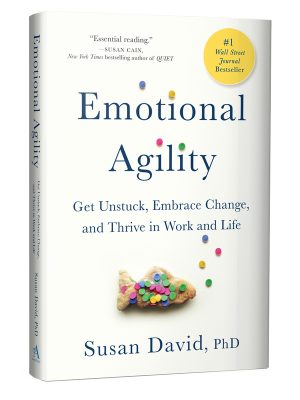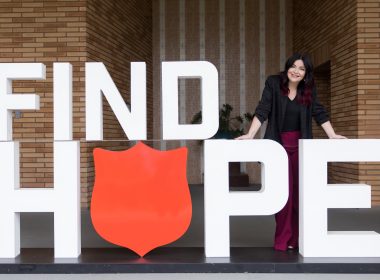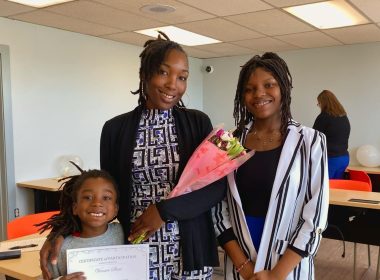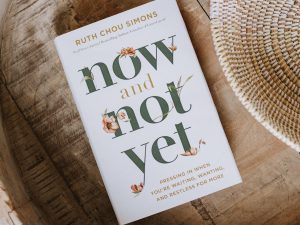Bestselling author and psychologist Dr. Susan David says caring for our emotions can help us thrive.
The way we navigate our inner world—our everyday thoughts, emotions and self-stories—has been proven to be one of the most important determinants of success in life on earth. It drives our actions, careers, relationships, happiness, health—everything.
But what if those thoughts could also be part of what’s holding us back from creating and supporting healthy growth at home, church, school or in the community?
In “Emotional Agility: Get Unstuck, Embrace Change, and Thrive in Work and Life” (Avery, 2016), renowned Harvard Medical School psychologist Dr. Susan David explains what it means to be emotionally rigid—that is, too committed to our thoughts, emotions and self-stories that we’re not able to embrace change or be the best possible versions of ourselves.
David draws on her more than 20 years of research and her own experience overcoming the grief of losing her father at a young age to show that emotionally agile people are not immune to stress and setbacks; the difference is that they know how to gain critical insights about situations and interactions from their feelings, and then use this knowledge to adapt, align their values and actions and make changes to bring the best of themselves forward.
By moving past the negative thoughts and emotions that don’t serve them, emotionally agile people are free to ignite change in their own lives and in the the lives of those around them, creating a daisy chain effect of good health, light, joy and connection.
We spoke with David to learn how we can incorporate her research into our own lives.
Caring: How does happiness relate to emotional agility?
David: My work focuses on one key question, and that is: What does it take internally in the way we deal with ourselves—our thoughts, our emotions, the stories we tell ourselves—what does it take internally in the way we deal with ourselves that enables us to thrive and be our best in the world? A lot of the narrative that exists in society is this idea that we should just think positive and chase happiness, and really what I do in my work is challenge these ideas for a number of reasons. First, because we know at the individual level that when people are overly focused on trying to chase happiness or being positive all the time, it actually just doesn’t work.
And that’s what the research shows, is that people who focus too much on happiness actually become less happy over time, and really what is very important from an emotional agility perspective is to move into a space with ourselves that is courageous and compassionate and curious about our inner world. When we adopt that stance toward ourselves, it enables us to be more present and connected and values-based in the world.
In your TED talk and in your book you mention being “hooked.” What does that mean?
– Watch Dr. Susan David’s TED Talk on Emotional Courage at ted.com. – Take the free Emotional Agility quiz at susandavid.com.
What I mean by being hooked is that our emotions are data, not directives, but very often what happens is we get hooked into our thoughts, emotions and our stories that don’t serve us. So, we might say something like, “I’m really angry; I’m going to have it out with that person,” or “my husband is starting in on the finances, I’m going to leave the room,” or “I’m stressed about work so I’m going to the dinner table with my cellphone.” Or we may even have a story about who we are, what we’re worthy of, what kind of relationships or jobs we’re worthy of—and some of these stories were written on mental chalkboards in Grade 3 about who we are and what we can achieve and do in the world.
Being hooked means our thoughts, emotions and stories have started to drive our actions in ways that don’t serve us as opposed to our values—as opposed to the way we want to be in the world. We have great intentions, but what so often happens is we might have an intention to be an inclusive leader, but we are in a meeting and we feel undermined, or we might have a great intention that we want to, for example, start a business, but there’s a story in us that tells us that we’re not going to be able to manage it and so we don’t take the next steps. We have thousands of emotions and thoughts every day. As a society, what we need is to be able to move into spaces of ourselves where we’re able to notice them for what they are: they’re not facts. They exist as important resources to us, but we don’t need to act on them.
Why is it important to create space between our thoughts and emotions and how we take action?
We live in a world with social media and with so much busyness that often we lose our heartbeat of our own “why”—“Who am I? What is important to me?” We’ve become very subject to looking at what cars our next door neighbors drive and what other people are doing, and it’s really, really important for our well-being and for our contentment and alignment to have our own values front and center, and to recognize that values are not abstract ideas but something we can choose to move toward every single day. When we create space between our thoughts and emotions, then we can choose who we want to be in each circumstance.

Often people think that they need to make big changes. We know actually that tiny tweaks, tiny shifts that are values-aligned are really powerful to people. For instance, we know that volunteering once a month can make a real difference to people and communities. In my free emotional agility quiz online that more than 100,000 people have taken is this idea of “how are you with your own emotions?” because often how you are with your own emotions will impact how you are with other people. If you can move into a space of health and wholeness, and values connection with your own self, what that does is it impacts in those ways with others as well.












